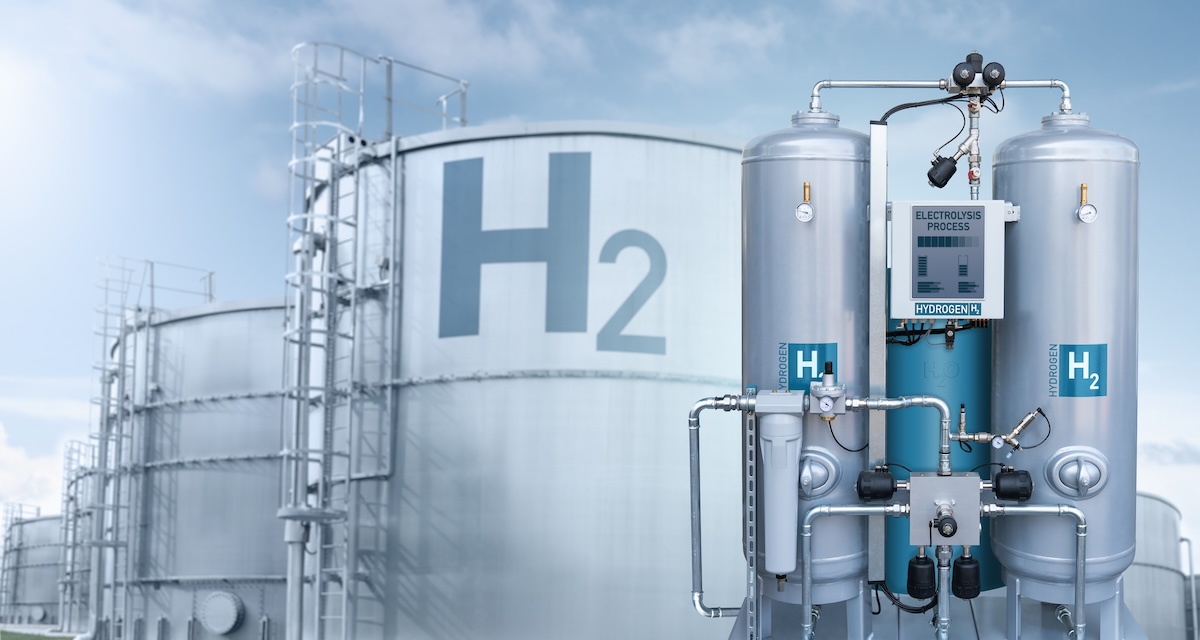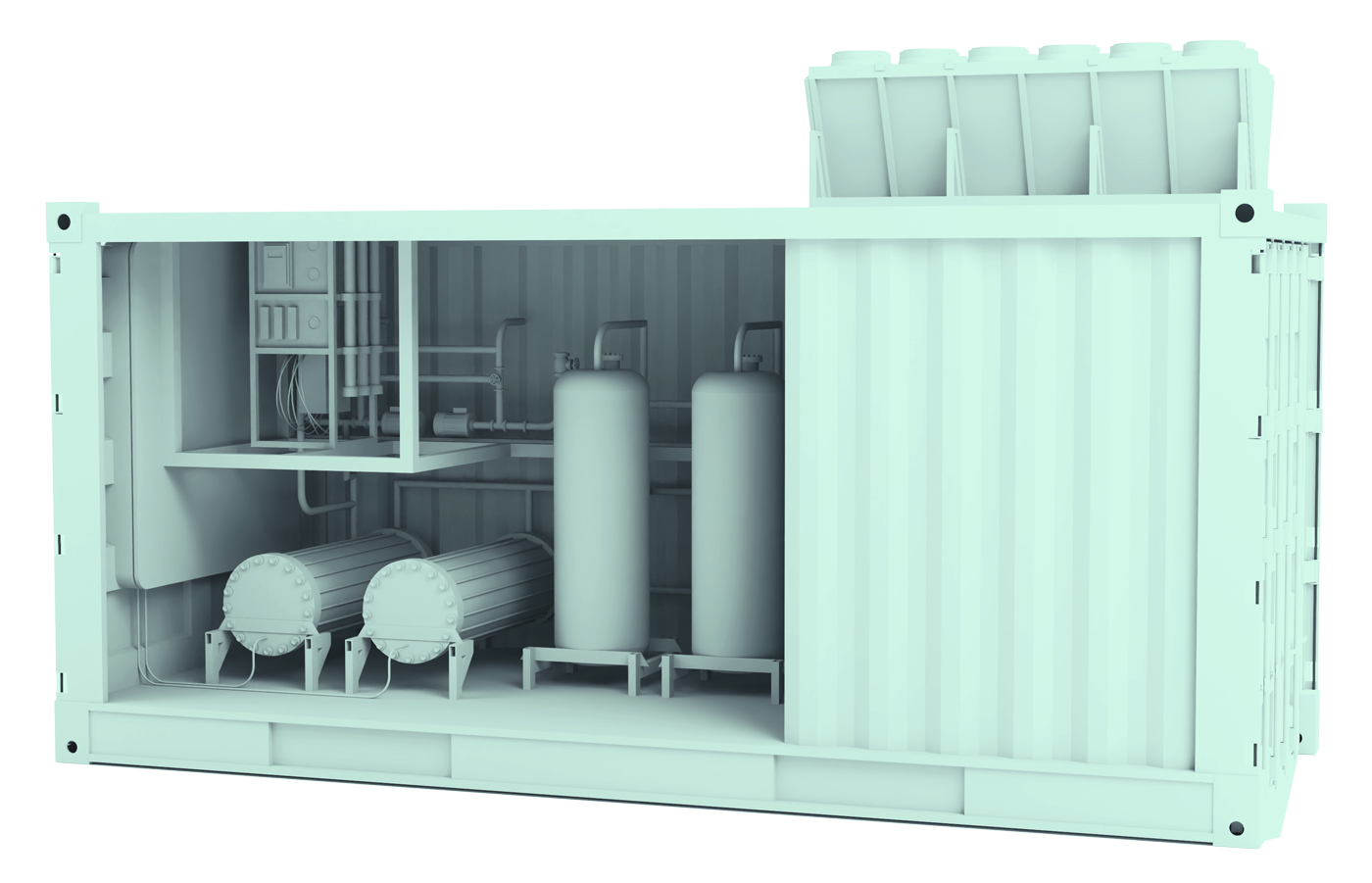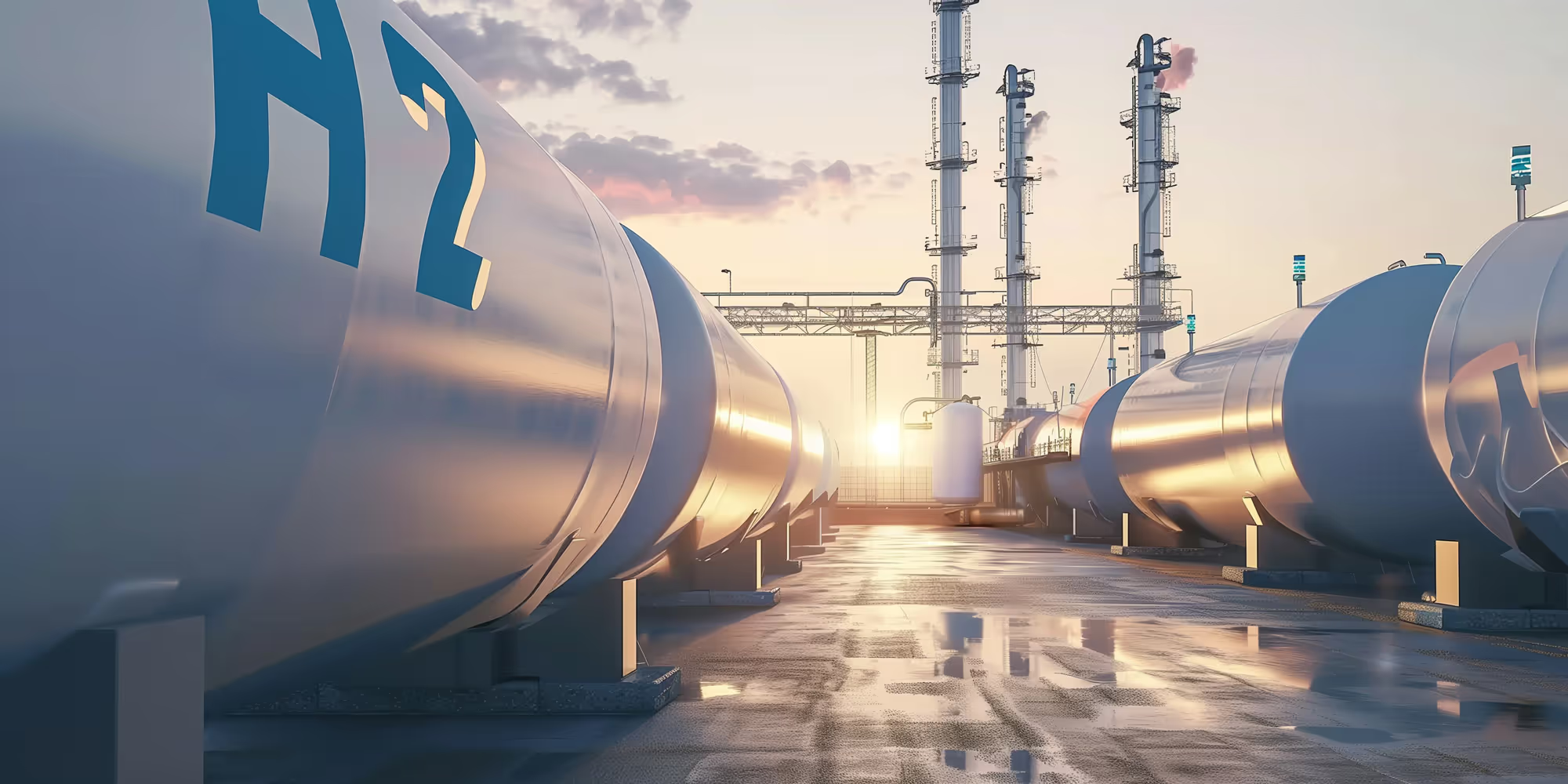A hydrogen electrolyser is a device that splits water (H₂O) into hydrogen gas (H₂) and oxygen gas (O₂). The hydrogen created through this electromechanical process can then be stored, transported, or used directly as fuel. Power to Hydrogen designs hybrid AEM electrolysers that make hydrogen electrolysers more cost-effective and easier to integrate into real projects.
What is a Hydrogen Electrolyser?
Although hydrogen electrolysis is a straightforward chemical reaction, the underlying technology has been meticulously engineered and continues to see incremental improvements. This emerging technology helps address the global energy needs while enabling us to store energy generated from renewable sources (like wind and solar).
Electrolysers are different from most existing hydrogen production methods because they can operate without releasing carbon dioxide. When powered with renewable electricity, they deliver hydrogen with almost no emissions. By running an electric current through the water, the electrolyser turns it into hydrogen gas at the cathode and oxygen gas at the anode. Some of the components of electrolyser systems are:
- Electrolyser Cell/Stack: Central unit where water splitting occurs.
- Cathode (-) and Anode (+) Electrodes: Components that conduct electricity to split water.
- Membrane or Diaphragm: Separates the hydrogen gases and oxygen gases.
- Power Supply System: Manages the electricity input needed for the reaction.
- Gas Collection and Purification Systems: Collects the product gases for storage or pipeline injection.
- Balance of Plant Components: Additional equipment that supports safe and efficient operation.
.jpeg)
Main Types of Hydrogen Electrolysers
The type of membrane, diaphragm, and electrolyte used can be used to classify hydrogen electrolysers. The four most popular kinds of hydrogen electrolysers are listed below:
Proton Exchange Membrane (PEM) Electrolysers
PEM electrolysers are widely used due to their ability to produce high-purity hydrogen and respond quickly to fluctuations in power supply. They use a solid polymer membrane as the electrolyte and can operate efficiently at high pressures. Thanks to their compact design and quick startup and shutdown capabilities, PEM systems are particularly well-suited for pairing with variable renewable energy sources like solar or wind. However, PEM electrolyser systems require expensive platinum group metals for operation, which result in higher upfront and operating costs.
Alkaline Electrolysers
Alkaline electrolysers are known for their reliability, low cost, and long-standing industrial track record. These systems utilize a liquid electrolyte, typically potassium hydroxide (KOH) or sodium hydroxide (NaOH), and operate at temperatures between 60°C and 80°C. Despite their larger size and slower response to power swings compared to PEM, their simple and durable design makes them a common solution for large-scale hydrogen production.
Solid Oxide Electrolysers (SOEL)
Solid oxide electrolysers use the high temperatures of waste heat to create hydrogen with high efficiency. These electrolysers operate between 600°C and 1000°C and use ceramic materials to power hydrogen electrolysis. Because they can integrate with existing industrial processes and utilize waste heat, they are frequently found in energy-intensive industries, such as steel and cement production. High operating temperatures, however, require specialized materials and raise challenges for long-term durability.
Anion Exchange Membrane (AEM) Electrolysers
Power To Hydrogen is a leading innovator in hydrogen production, advancing anion exchange membrane (AEM) electrolyser technology to deliver reliable and efficient solutions that combine the best features of PEM and alkaline systems to achieve highly efficient hydrogen electrolysis. AEM systems use solid-state membranes that operate in alkaline environments with non-precious metal catalysts, cutting both material and operational costs. The modular design of Power To Hydrogen's M-Class electrolysers allows for scalable systems deployable in stacks from 500kW to 25MW.

Other Hydrogen Production Methods
Hydrogen electrolysers are not the only ways to produce hydrogen, but they are the only commercially viable method that doesn’t emit carbon (when powered by renewable energy sources). Here’s how it compares to other common approaches.
Steam Methane Reforming (SMR)
SMR is currently the most widely used method of hydrogen production. It extracts hydrogen from natural gas by creating a methane reaction using steam at high temperatures. While it delivers large volumes of hydrogen at relatively low cost, it also releases significant amounts of carbon dioxide. This makes SMR unsustainable without carbon capture and storage (CCS), which adds cost and complexity, while still not meeting the zero-carbon emissions of electrolysers.
Coal Gasification
Coal gasification is used in regions with abundant coal and limited gas access. The coal gasification process creates a coal reaction when paired with oxygen and steam to create a syngas mixture of hydrogen, carbon monoxide, and carbon dioxide. The process is carbon-intensive, with higher emissions than SMR. Although it is still used in some regions, coal-based hydrogen faces significant pressure from changing regulations and the push for energy alternatives.
Biomass Gasification
This process breaks down organic matter (crop residues, algae, wood, or municipal waste) to release hydrogen. Biomass gasification can be considered renewable if the feedstock is sourced responsibly. However, scaling it is challenging due to limited feedstock supply and regional variations in availability.
Several experimental hydrogen production methods are still being tested, such as photocatalytic water splitting using sunlight or high-temperature thermochemical reactions driven by nuclear or solar heat.
Why Electrolysers Are The Path Forward
Hydrogen electrolysers are the most adaptable and environmentally sustainable method for hydrogen production. Here are some of the reasons that hydrogen electrolysers, and more specifically Power To Hydrogen's AEM electrolysers are the best option:
- On-Site Production: Produces hydrogen precisely where it is needed, balancing electricity demands and supporting stable power grids.
- Renewable Integration: By absorbing excess energy and chemically storing it as hydrogen, electrolysers increase the viability of renewable energy sources.
- High-Purity Hydrogen: PEM and AEM systems are capable of producing hydrogen that meets the stringent purity requirements necessary for fuel cells.
- Versatility: Easily scalable with electrolysers that fit small businesses to large industrial complexes.
- Sustainability: Hydrogen electrolysers drastically lower carbon emissions by generating hydrogen without the use of fossil fuels.
Power To Hydrogen's Electrolyser Solutions
Power to Hydrogen specializes in next-generation electrolyser solutions built for real-world performance. We offer two electrolyser models, the M-Class and the K-Class. Our patented AEM hydrogen electrolysers blend the best parts of PEM and Alkaline systems, maximizing output while keeping costs manageable.
Power to Hydrogen collaborates with public and private partners, including the Department of Energy, NASA, Shell, EDP, American Electric Power, and Asahi Kasei. From early-stage innovation to real-world pilot projects, we’re helping drive progress in hydrogen electrolysis technology.
Take the Next Step with Power To Hydrogen
If you’re considering hydrogen electrolysers, Power To Hydrogen is ready to help. Find more information and learn how our advanced AEM electrolysis solutions can make a meaningful impact on your energy goals. Reach out to us today for a free consultation & comprehensive quote.








